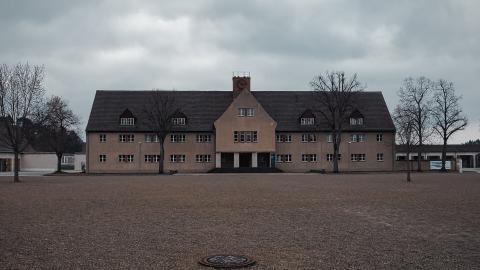The Vikings: the original feminists?
Rough, tough and brutish, when you picture a Viking, you’ll more than likely think of a huge and hulking great big beast, overcome with bloodlust, capable of enormous violence. What you won’t think of is a thoughtful, sensitive and caring type who’s just as concerned with the thoughts and feelings of women as he is with conquering new terrains and viciously slaughtering his enemies.
That may just be about to change.
Okay, before we start - let’s be clear. The Vikings existed between the 8th and the 11th centuries. These Norse warriors were hardly ‘progressive’ by today’s standards. Theirs was, of course, an overwhelmingly patriarchal society. But for their time? These Scandinavian seafarers afforded far more respect, dignity and freedom to women than probably any other people on earth at the time.
In fact, the Vikings - compared to everyone else - were veritable feminists. Here are just some of the ways that they lead an early charge in affording women greater rights...
For more articles about the history and culture of the Vikings, check out our Viking history hub.
Unhappy wives were allowed to divorce their husbands
It was surprisingly easy for married women in Viking society to divorce their husbands, meaning no woman was forced by law to remained married against her will.
Acceptable reasons for divorce were varied, but it was possible for a woman married to a Viking to cite grounds such as domestic violence, a lack of financial support or even sexual incompatibility.
Women were also permitted to reclaim their dowry as part of the divorce, as well as keep assets from the marriage and even remarry.
There was a relaxed attitude to familial expectations
Not only were unmarried women permitted to live with unmarried men, but it was also entirely socially acceptable. There was also a completely permissive attitude towards children born out of wedlock. ‘Illegitimacy’ wasn’t a concept and women were never shamed for falling pregnant or having a child while unmarried.
Women could become rich, powerful and high status
There were known instances of women ascending the social ladder and gaining money, power and influence. The most notable example of this came in the shape of 'The Oseberg Queen’, a woman who was buried in a beautifully-decorated ship alongside her many expensive possessions back in A.D. 834.
Later in that century, 'Aud the Deep-Minded', after her husband and son died, moved her household to another land, chartering a ship voyage for her and her family to Iceland, where she became one of the colony’s most notable, respected and important settlers.
Women would often be in charge
While it’s true that when he was home, a returning Viking was ‘the man of the house’, in his absence, his wife would have full authority. In the event of her husband’s death, the surviving woman would take over the house, farm or business and run it with complete impunity.
Archaeological digs have since discovered many graves of females of the time, buried with ornate and decorative rings and keys. These trinkets were symbols of the woman’s role and her power within it.
Women were allowed to fight alongside men
In the Middle Ages, throughout the world, women were seen as spouses, mothers and housewives. The closest a woman would get to a battlefield would be to tidy one up after her husband and his clan had killed everyone. Not so with the Vikings. At least, according to some historians, anyway.
British archaeologist, scholar and Viking expert Neil Price has presented compelling archaeological evidence that suggests that women would sometimes fight alongside men as the Vikings fought and annihilated enemy forces.
The 12th-century Danish historian Saxo Grammaticus also told of how 300 such shield-maidens fought alongside men in the Battle of Brávellir in the mid-eighth century.
So were the Shieldmaidens as seen in Vikings real? Did the likes of Lagertha, Astrid, Torvi, Amma, Gunnhild really exist? Opinion is split academically, but DNA evidence discovered in 2014 certainly seems to back up the existence of these ‘female Vikings’.
Even if women didn’t often see battle, they were not hidden at home while the men went off to fight, as with most other cultures and civilisations throughout history. Vikings would often bring their wives and children with them while claiming new land and territories.
The law often protected women’s rights
Again, it’s worth pointing out that we should keep things in perspective here. Men quantifiably had more rights than women in Viking society. But for the time, females were remarkably well looked after.
While the medieval Scandinavian law book the 'Grágás', also known as 'The Gray Goose Laws', would hardly thrill modern societies, it was helpful to women in many cases. It may have prohibited women from being able to wear men's clothes or cut their hair short, but it did offer some protection from the unwanted attention of aggressive men. Unwelcome 'kissing or intercourse' was listed as an offence and carried with it heavy punishment.
Not only was harassment or assault of local women punishable by law, it was seen as shameful and something to be looked down upon.
That whole ‘raping and pillaging’ thing is fairly inaccurate
It’s all well and good that the law protected women in Viking society. But that’s of little use if the menfolk are spending most of their time going about foreign lands raping and pillaging, is it? Well, quite. Except that whole idea may well have been rather overplayed.
Viking men certainly pillaged. They were ferocious warriors and pitiless when invading and expanding their empire. There’s very little proof, however, that they would commit widespread sexual violence whilst doing so. At least, no more than anyone else.
In fact, many stories of heroism in Norse legend and sagas depict women’s honour being protected and any fabled acts of aggression or sexual assault are generally met with axe whacks to the head.
So, then. It seems as though the Vikings may well have been secret feminists. At least to some degree, anyway.
Let’s not get carried away, though. There was no real equality as such in Viking society. But for the time...? Well, it was something, at least.
















